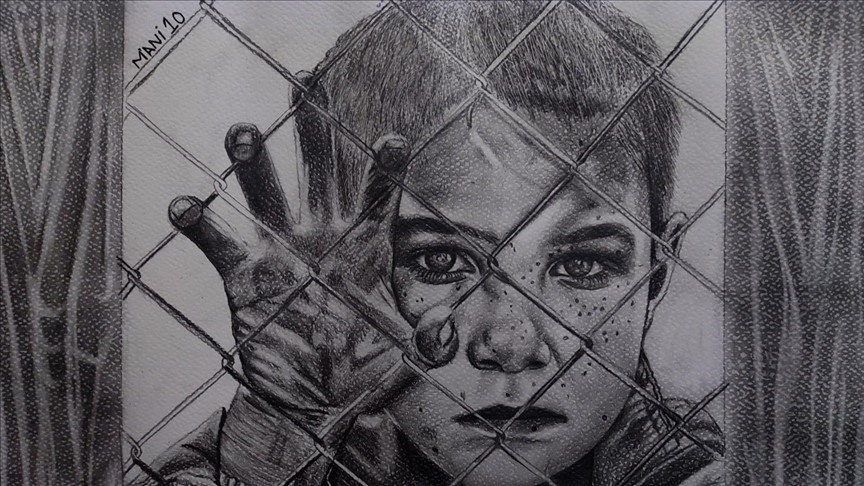
While Pakistanis and Kashmiris are set to observe the Kashmir Solidarity Day on Saturday in support of the pro-freedom movement in Indian Occupied Jammu and Kashmir (IIOJK), young artists pick colour and brush to paint daily life in the picturesque valley.
Pakistan and Azad Jammu and Kashmir (AJK) officially observe the day on February 5 every year since 1991 to express solidarity with the people of IIOJK.
Speaking to Anadolu Agency, Rabia Zainab, a fourth-year student at the Arts and Design Department of the University of Azad Jammu and Kashmir in Muzaffarabad, said she has tried to bring hope to the people, encouraging them to stay “steadfast” in their struggle against the suppression.
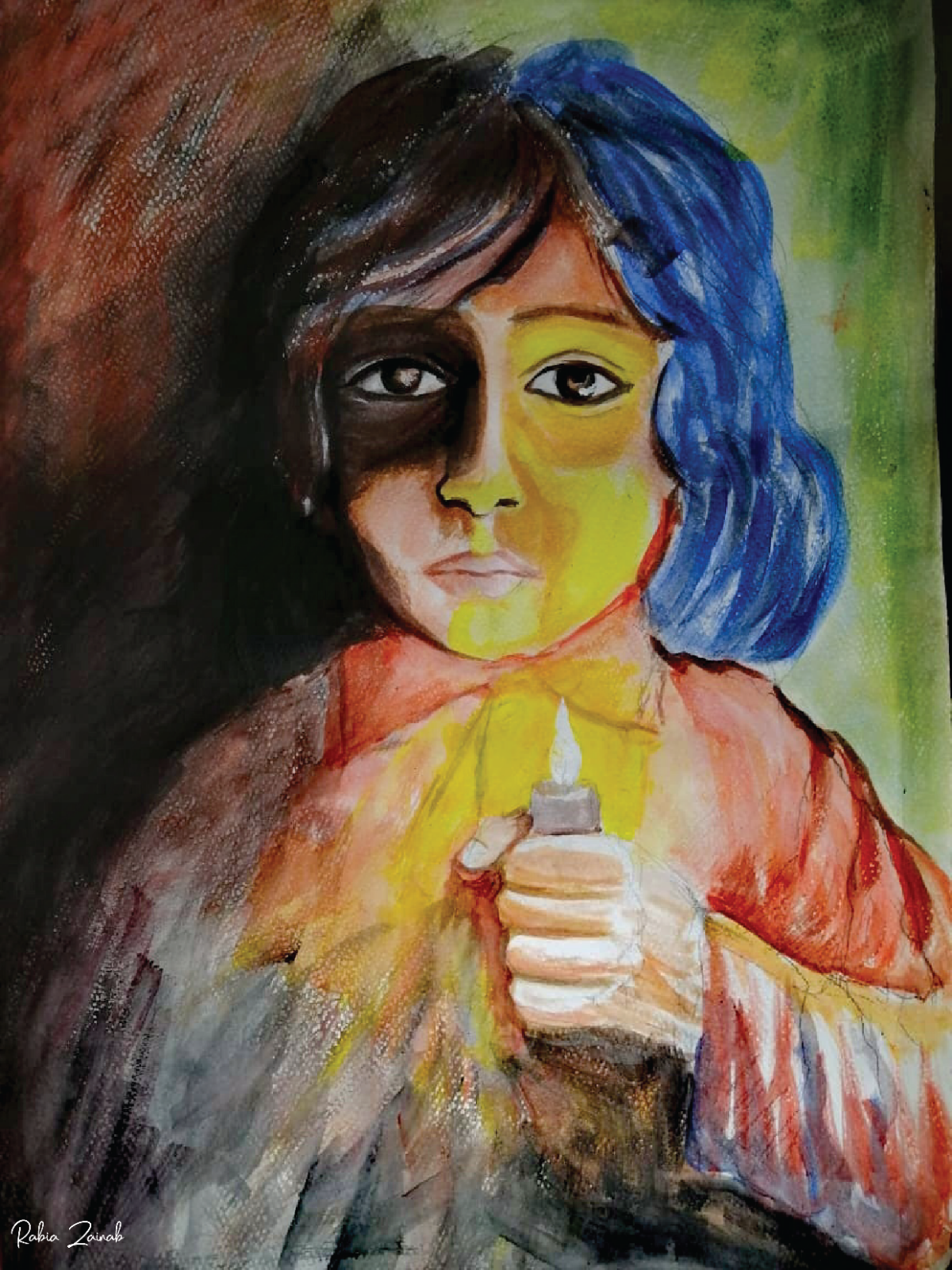
“Apart from purple, I have used yellow (water) colour, which is a symbol of happiness and hope. I wish to intrigue the oppressed with the feeling of hope for a bright future and self-satisfaction through my piece,” she said.
Titled Light in the Darkness of Life, Zainab’s artwork is part of a painting contest organised by the university to highlight the different aspects of life in Kashmir, especially in the context of solidarity day, through colours.
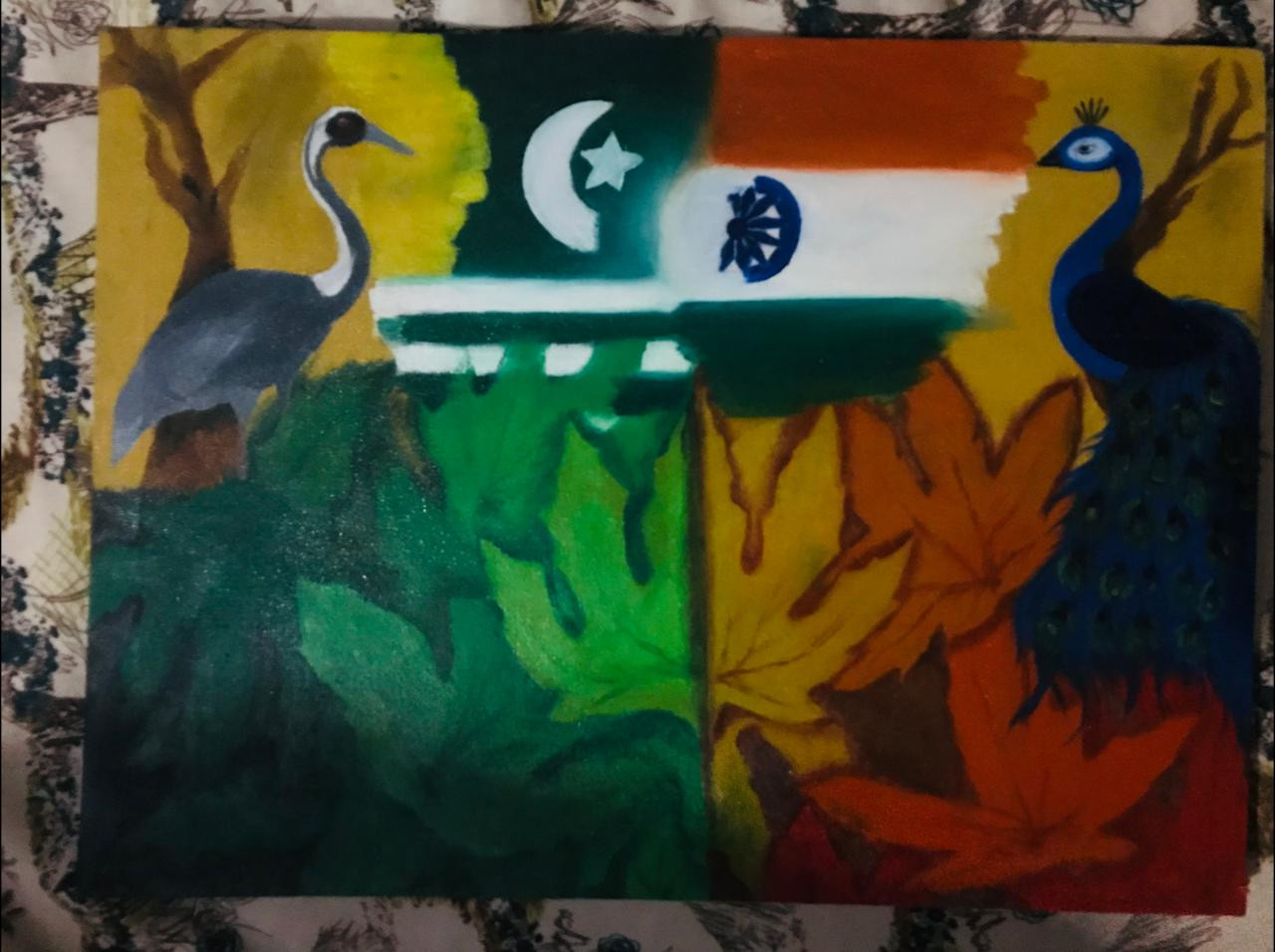
“Hope is like a trust that we can give to others. It is a remedy for despair and grief, in addition to courage and will to live,” she said, referring to the dominating purple colour, which is a symbol of strength.
“Tomorrow awaits us because of hope. We all suffer calamities in common and if there is no hope (for a better tomorrow) we might have given up earlier,” she maintained, citing the psychological impact on a common Kashmiri caused by casualties, sieges, and economic destruction for decades.
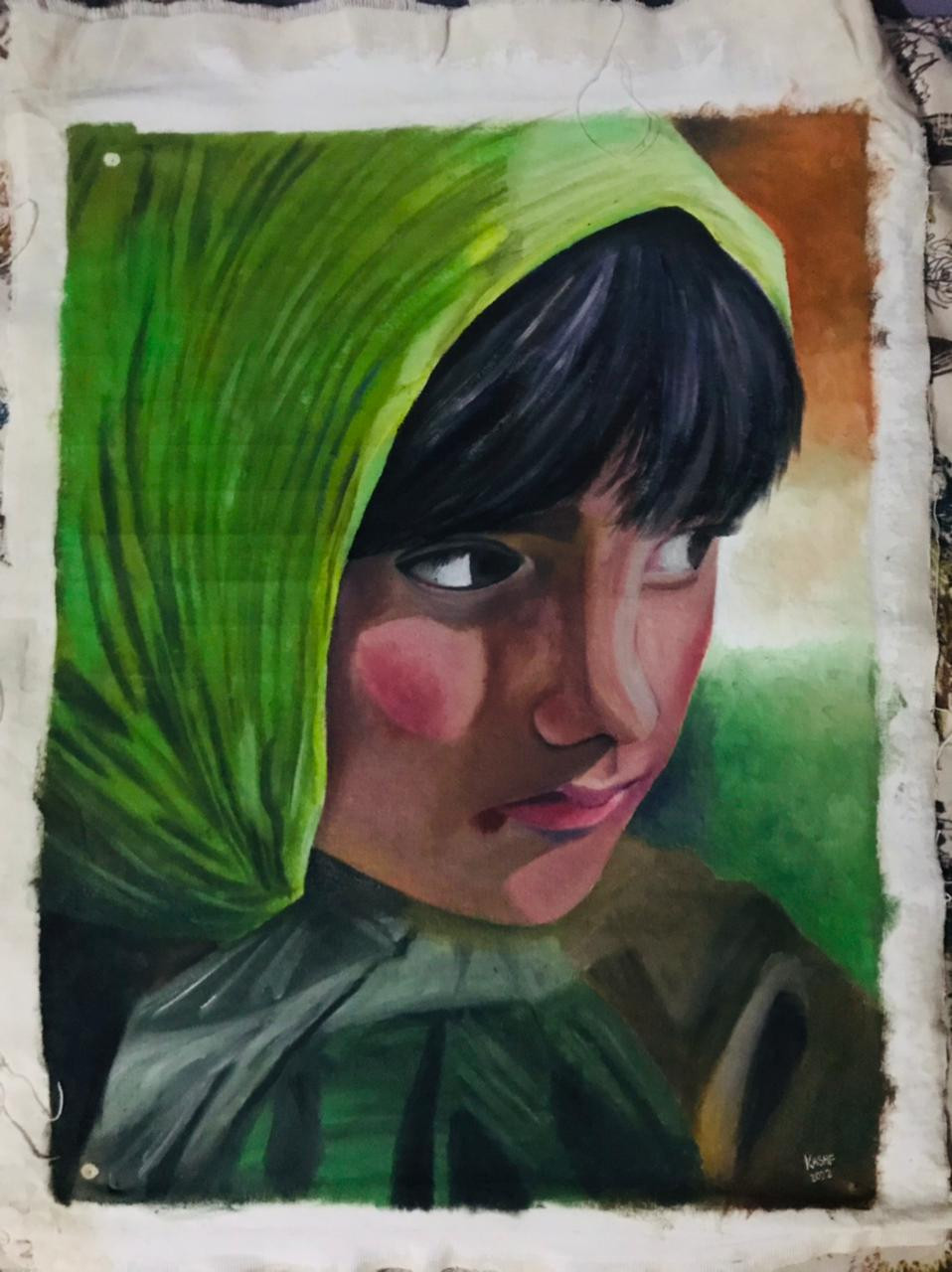
Since India and Pakistan were partitioned in 1947, the two countries have fought three wars – in 1948, 1965, and 1971 – two of them over Kashmir.
Kashmiri groups in IIOJK have been fighting against Indian rule for independence, or for unification with Pakistan. According to several human rights organisations, thousands of people have reportedly been killed in the conflict in the region since 1989.
Essence of peace
Echoing Zainab’s views, Hafiz Usman Naeem said in his piece of artwork, predominantly a pencil drawing showing a child in a cage, he has attempted to paint the essence of peace and hope for the “oppressed” Kashmiris.
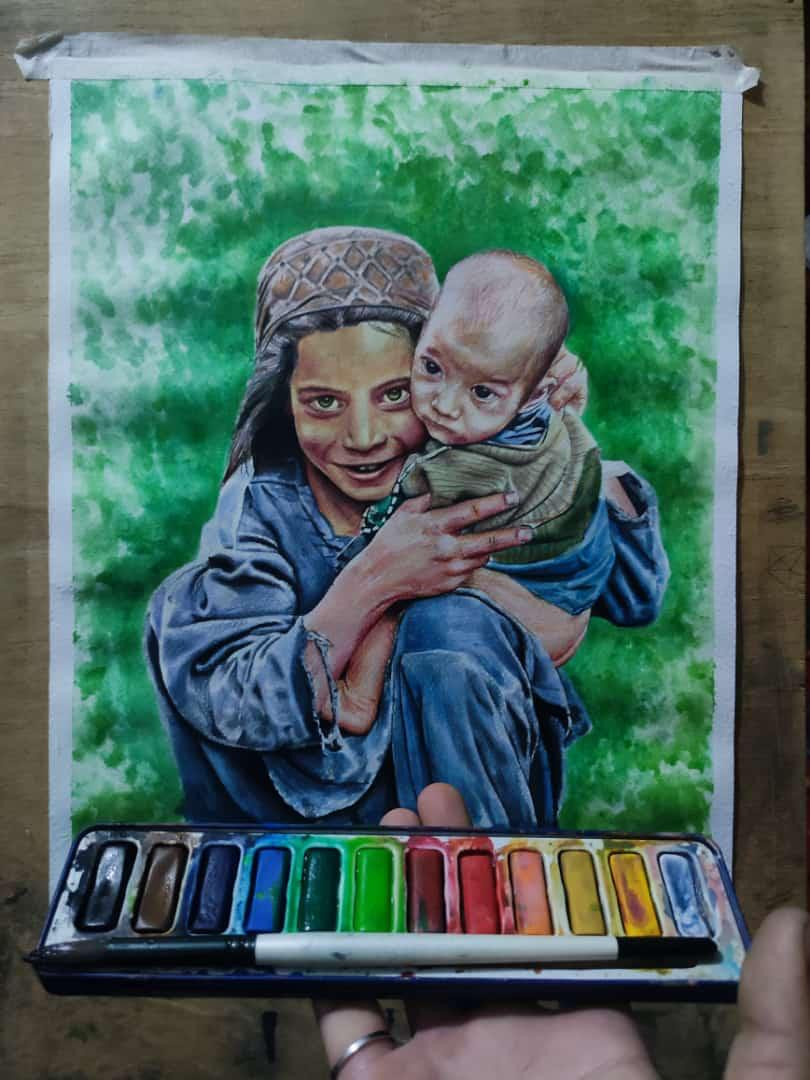
“A good piece of art can either soothe the pain or make it more intense. It (drawing) also shows the silence of the UN and the international community over a continuing streak of human rights violations in the valley,” the young artist told Anadolu Agency.
“The child is caged but only temporarily because one day the valley will lighten up with the fire of freedom,” he maintained.
“Let’s be hopeful of a great outcome.”
Syed Bilal Kazmi, another university student taking part in the contest, used watercolours to paint a Kashmiri mother holding her child in her arms.
With an eye-soothing green background, the highlight of Kazmi’s artwork is the “supreme smile” of the woman attired in a blue Kashmiri gown, and sporting a traditional cap.
Read more: Kashmir cauldron
“Even though she has long been facing a myriad of hardships, her happiness tells the world how courageous a Kashmiri woman and mother can be,” Kazmi said while speaking to Anadolu Agency.
While holding her child, the woman makes a victory sign, vowing to remain steadfast in the face of multiple challenges she has been facing for decades.
Half-widows
Rukhsana Khan, the head of the Arts and Design Department, said that dozens of young artists took part in the contest, painting various themes in regard to “circumstances on the other side of the divide,” including “half widows,” and destruction of Kashmir’s cultural identity and violation of human rights etcetera.
Also read: Senator Krishna Kumari presides over Senate session on Kashmir
Half-widow is a term given to Kashmiri women whose husbands have been missing. Several human rights groups accuse the Indian forces of being involved in the forced disappearances during the ongoing conflict in IIOJK.
Moreover, she said the young artists have also painted the agony of Kashmiri youths and their struggle for their homeland, in addition to the traditional architecture of Kashmir valley. The valley comprises Muzaffarabad and the scenic Neelum Valley.
The artworks will be put on display on February 5 at the university campus.
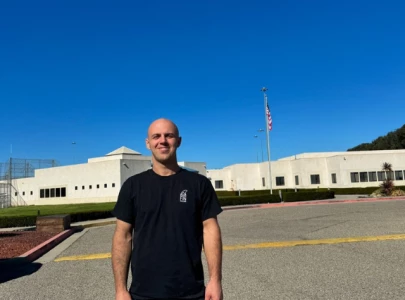

1725612926-0/Tribune-Pic-(8)1725612926-0-165x106.webp)


1726722687-0/Express-Tribune-Web-(9)1726722687-0-270x192.webp)



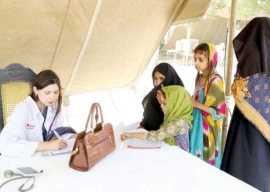
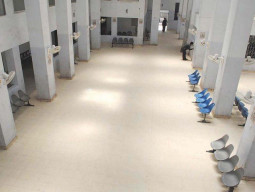









COMMENTS (2)
Comments are moderated and generally will be posted if they are on-topic and not abusive.
For more information, please see our Comments FAQ